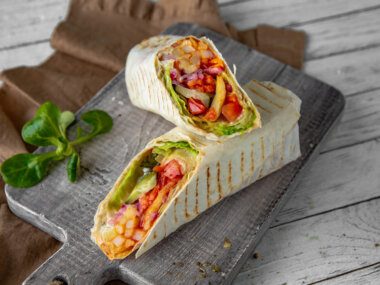If you’ve ever walked down the exotic aisles of your local grocery store, chances are you’ve encountered a delightful duo of fruits – plantains. These elongated members of the banana family might look similar, but there’s a world of difference between the green and yellow varieties. Today, we’re peeling back the layers to uncover the secrets of green plantains and yellow plantains, and trust us, it’s a mouthwatering journey!
Difference Between Yellow Plantain and Green Plantain
Plantains, like chameleons, are masters of disguise when it comes to color. It’s like they have a secret language through their peels. Let’s break it down.
Green Plantains:
Picture this: a vibrant, verdant peel. This, my friends, is the telltale sign of youth. When a plantain is rocking that green jacket, it means it’s not quite ready for the spotlight. Unripe and firm to the touch, green plantains have a demeanor that’s quite similar to, well, potatoes.
Yellow Plantains:
Now, let’s fast-forward a bit. As plantains age, they undergo a magical transformation. Their green facade starts to blush with yellow hues. When the yellow kicks in, you’re in for a treat. Yellow plantains are like the sweethearts of the plantain world, boasting a delectable sweetness when cooked.
Taste Bud Tango: Green vs. Yellow Plantains
If plantains could sing, green ones would hum a potato-themed tune, while yellow ones would serenade you with sweetness. Let’s dig deeper into their flavor profiles.
Green Plantains:
Imagine the taste of a hearty potato, and you’re close to understanding the flavor of green plantains. These green warriors are starchy through and through, packing a punch of dietary fiber that’s friendly to your digestive system. They might not be the sweetest bunch, but when it comes to nutrition, they’re the unsung heroes.
Yellow Plantains:
When those green plantains start blushing, it’s not just for show. As they ripen, the starch within begins to waltz its way into sugary territory. Yellow plantains are all about the sweetness – think caramelized goodness with a soft, yielding texture. Peeling them is a breeze compared to their green counterparts, making them a go-to for various recipes.
Texture Talk: Green Plantains vs. Yellow Plantains
The plantain texture journey is a fascinating one. It’s like the evolution of the perfect slice.
Green Plantains:
Hold on tight, folks, because green plantains are the bodybuilders of the plantain world. Their hefty starch content keeps them firm and robust, which, while great for certain dishes, also makes peeling them a bit of an arm workout.
Yellow Plantains:
As plantains turn yellow, they embark on a journey towards tenderness. The starch gradually takes a backseat, and their texture becomes softer and more pliable. Slicing them is a walk in the park compared to the resistant green ones.
Fiber Faceoff: Green Plantains vs. Yellow Plantains
Fiber, the unsung hero of digestion, plays a crucial role in both green and yellow plantains.
Green Plantains: Loaded with dietary fiber, green plantains are digestive champs. They’ll keep things moving smoothly in your gut.
Yellow Plantains: Even as they sweeten up, yellow plantains retain a good dose of fiber, ensuring your digestive health doesn’t take a backseat to their newfound sweetness.
Sugar Showdown: Green Plantains vs. Yellow Plantains
As plantains make the transition from green to yellow, something magical happens: starch turns into sugar.
Green Plantains: Green plantains have relatively low sugar content. They’re not out to satisfy your sweet tooth, but they pack a nutritional punch.
Yellow Plantains: The stars of sweetness, yellow plantains boast higher natural sugar levels. A half-cup of cooked yellow plantains can make your taste buds dance with around 15 grams of sugars, while their green cousins are more reserved with just about 1.5 grams in the same amount.
Calories: The Final Showdown
Plantains, like most foods, come with varying calorie counts based on how they’re cooked.
Green Plantains: Generally, green plantains have a slightly lower calorie count compared to their yellow counterparts. Frying them may increase the calorie content, but overall, they tend to be a tad lighter on the calorie scale.
Yellow Plantains: On the flip side, yellow plantains bring a bit more to the calorie party. They might be sweet, but they’re also a bit richer in calories compared to their green siblings.
In Summation
So, there you have it – the thrilling tale of green plantains versus yellow plantains. The color of their peel tells a story, their taste is a symphony, their texture a dance, and their nutritional profiles a feast for the health-conscious.
Remember, both green and yellow plantains are nutritional powerhouses, each with its own unique charm. Whether you’re whipping up some crispy plantain chips with green plantains or indulging in the sweet embrace of yellow plantains, you’re in for a culinary adventure like no other.
In the world of plantains, it’s not about picking a side; it’s about savoring the beauty of both. So, next time you’re in the produce section, grab a bunch of green and yellow plantains, and let your taste buds embark on a tropical escapade!
Happy cooking, plantain enthusiasts!



